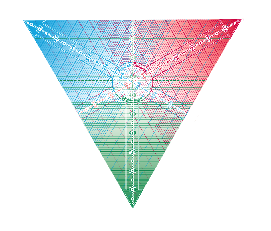
Nurturing Talent
IMPROVING TEAM EFFECTIVENESS
Experience from collaborative teams show that successful relationships are built by addressing behaviours in the following order:
Individual
One to One
Team Working
THE PROBLEM WITH PEOPLE
Working in a pressurised environment creates conflict within working relationships. It is difficult to apply best practice when everyone’s effort is being put into making the relationships work and not doing the work. In order to work more effectively we need to understand people’s drivers and how their behaviour changes under pressure.
People are like icebergs. When we interact with people we can listen to them and see their behaviour. What we can’t see is the intention underneath that behaviour so we fill in the gaps based on our own personal experience. However, everybody is different so we sometimes get this wrong and that is how misunderstandings occur.
Wouldn’t it be easier if we could see underneath the behaviour and understand the intention so that we avoid the misunderstanding in the first place?
USING SDI TO UNDERSTAND INDIVIDUAL BEHAVIOUR
To do this we use a tool called SDI – the Strength Deployment Inventory®. It helps us to understand people’s motivators (and “see the iceberg below the water”). The Strength Deployment Inventory is a tool that enables everyone to understand the reason why people do things rather than just observe and react to what is done. It helps to identify personal strengths and motivations so that people can develop as individuals, as well improve working or personal relationships with others. It also provides insights into how to recognise the first signs of conflict in others, and shows how to respond appropriately to resolve the dispute before it gets out of hand and becomes destructive.
WORKING AS A COLLABORATIVE GROUP
Research shows that 70% of alliances fail to deliver expected results and 50% fail outright. The majority fail not because of the contract but because of relationship issues.
To address the issues of collaborative working, we have a developed a Team Development Model which is based on many years of research to understand scientifically and logically why some teams excel and others under-perform. We have identified a number of attributes using scientific analysis, which we have incorporated with basic team working principles to produce eleven key areas to measure team performance. We have developed a framework self-assessment questionnaire that examines these areas and provides a snap shot at any one time of the attitudes of individuals and sub-teams within the group.
REGULAR MONITORING AND TARGETED INTERVENTION
Each time a team uses the self-assessment questionnaire, the results are collated and displayed to show the team view. Based on these results, we can jointly agree the priority areas to address and how to address them.
The questionnaire can be run on a quarterly basis to show how the team is maturing over time.
MEASURE OF EFFECTIVENESS
Feedback from one team leader with a team of 22 staff:
“You haven’t really told me anything abut my team that I didn’t already know. The difference is that you did it in a day but it took me 6 months. I wish I had done this at the start!”



